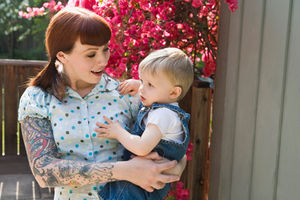The 7 systems of sensory processing: which one can you relate to?
- emmatstaples
- Jul 15, 2018
- 3 min read

Many children with sensory processing difficulties have trouble sleeping, can be distressed with brushing teeth or hair, avoid swings or slides, may play on their own, has trouble with changes in routine or transitioning between tasks, easily distracted, has too much energy or are too lethargic, reactive to sounds, impulsive, overly frustrated or are too forceful with their body movements. Sound familiar?! Sensory processing difficulties are not uncommon, and we explains the seven sensory systems that can be involved.
We have seven sensory systems. Some of us are good at processing information from all seven systems, while the rest of us may find information from one or more systems hard to manage, regulate or tolerate. Let’s first look at the systems involved:
1. Tactile system- this is getting information into the body from the skin. It uses receptors in the skin to get touch sensations including pressure, vibration, temperature and pain.
2. Auditory system- this is all about what is heard. This is the ear functioning that allows us to process volume and pitch.
3. Oral system- involves the mouth. Usually the oral cavity is a big regulator for everyone. What do you do when you’re on a road trip and you’re getting sleepy, have a drink or something to eat. This typically for most people increases their arousal and alertness. The oral system includes taste, respiration and breathing, and chewing.
4. Olfactory system- interpreting smells. This tells us if the smells is safe or harmful, strong or weak.
5. Visual system- what is being seen. This uses the eyes to interpret light, darkness, colour, movement. Most people are visual learners so we focus on the visual system and use it a lot. You’ll know some children who will hate bright, stimulating light and this can be quite overwhelming. Others wants more visual stimulation and seek this.
6. Vestibular system- this relates to movement and balance. It uses the semicircular canals in the inner ear to receive information about movement, balance, gravity and change of our head position. It tells us how fast or slow we are moving, our orientation in space and head movements. Many children are movement seekers by always running around, are in constant motion and can’t sit still.
7. Proprioceptive system- this is knowing where our body parts are in space and relation to each other. This is feedback form our muscles and joints to our brain. This can also be called deep pressure or heavy work. The proprioceptive system is working when children use large muscle groups and joints. This includes kids who like pressure in forms of hugs, wrestling, being squished under pillows or likes heavy objects. The proprioceptive system is commonly known for calming and orientating people. This system has also been shown to desensitise sensory sensitivities.
A child with sensory processing concerns or difficulties can relate to either one or more of these 7 sensory systems. The child can seek a particular sense or avoid a particular sense. The child may also have difficulty regulating his or her behaviour and emotions if they are struggling with sensory input. This is because the child is having trouble processing, interpreting and having appropriate responses to information from the environment or around them. It is not a bad thing! Everyone is different and that is ok. What we need to watch for are children that find it hard to function and participate at school, home or in the community because they are not able to regulate and interpret their sensory inputs well. When this happens, that is when we get involved to develop strategies for children to manage their sensory environment.
Difficulty with sensory processing can look like attention issues, inappropriate behaviour, anxiety, over active or very lethargic, difficulty learning and maintaining skills, and self regulation difficulties. In more depth, common things you would see in a child with auditory sensitivities is running away from loud noises or liking a male voice rather than a females, or vice versa. Something you would see in a child who seeks movement would be always running, never walking, and jumping. They would have difficulty sitting still. A child who seeks touch, will love textures (ie. loves soft things), objects, people or feels calmer if their skin in being touched. A picky eater may have a meltdown if they don’t want a particular food or if a texture is too hard or creamy.
If you have a little one who you think might be struggling with one or more sensory systems, we are here to help!








Comments